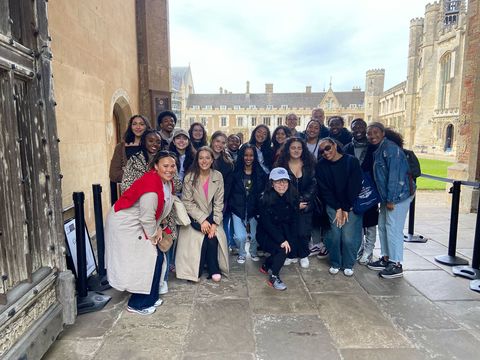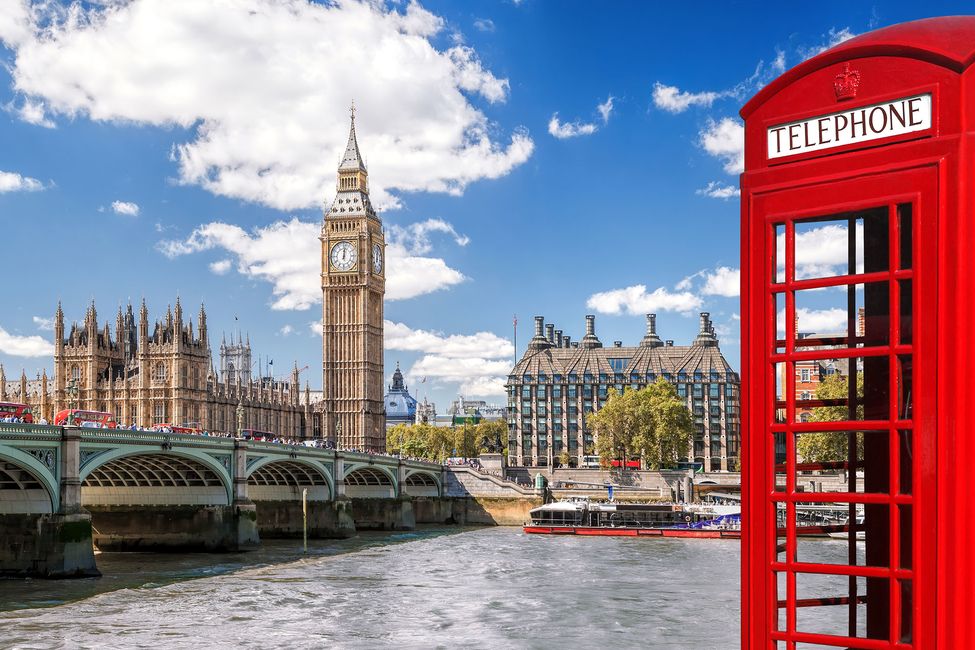Top 6 Differences Between High Schools in the U.K. and American High Schools
The high school experience is an integral part of growing up, no matter where you live! But have you ever wondered what the main differences between high schools in the U.K. and the U.S. are?
There are quite a few!
This guide is useful for those who are simply curious or those considering participating in CIEE’s High School Abroad in the United Kingdom program.

1. School Names and Grades
One of the significant differences between British and American high schools is what schools are called and how school years are divided.
In the U.K., high school is known as secondary school. British students start high school at age 11 and include years (or grades) 7 to 11. After year 11, students can choose to continue secondary school by attending "sixth form" or "college," different from American college. Sixth form or college in the U.K. is an extension of high school and includes years 12 and 13 for students aged 16 to 18.
In the U.S., students begin high school around age 14 or 15 and attend grades 8 to 12. That means when British students start high school, Americans are still attending middle school!
Another key difference is that American grades to British years are off by one year because students don't attend kindergarten in the U.K. but start at year 1 instead.
2. School Year Length
The length of the school year in America and the U.K. is also a little different.
In the U.K., students typically begin school in early September and finish mid-to-late July. The school year is divided into trimesters, with a week off between each term. British students only get about six weeks off for summer vacation and instead have more frequent breaks throughout the year.
In the U.S., the school year runs from early September to the beginning of June, which means American students enjoy 10 to 11 weeks (about 2 and a half months) of summer break! The American school year is broken into two semesters, and students typically receive only two long breaks outside of the summer: one week off for spring break and one week off for Christmas.
3. Daily Schedule
When American and British students attend school also varies.
In the U.K., the school day runs a little later, between 8:30 a.m. to 3:30 p.m. Not only do British students get to sleep in a little later, but they often study fewer subjects per day than U.S. students.
In the U.S., high schoolers have an earlier start and longer days, usually between 7:30 a.m. and 2:30 p.m. or 3:00 p.m.! Plus, American students typically have more classes per day.
4. High School Subjects
For the most part, high school subjects here and in Britain are similar.
However, in the U.K., students study a broad range of subjects up to age 16. After year 11, students can choose to focus on a single subject like Math or Literature in sixth form. Students must first take GCSE exams, which can help them decide what subjects to specialize in.
In the U.S., high schoolers study a range of core subjects like English, Math, Science, and Social Studies. American students don’t have to worry about choosing a single topic to specialize in until university.
5. High School Culture
High school culture is a highlight of the educational experience, and there are numerous differences between the U.S. and U.K. school systems
In the U.K., secondary school is very formal. Students must typically wear matching uniforms and maintain an academic relationship with teachers. School-centric sports and co-curriculars are not that common, and students rarely wear school colors other than their required uniform.
In the U.S., uniforms are rare, especially in public schools. Student-teacher relationships are much more informal, and school spirit is a large part of the American high school experience. Most American students participate in school-sponsored co-curriculars, such as sports, music, theater, clubs, and more. School events like homecoming and prom are another special American high school tradition.
6. College Preparation
American and British high schoolers prepare for college or university in similar ways. Both must get good grades, write a personal statement and obtain teacher references. There are some key differences to note though!
In the U.K., colleges and universities are different types of schools. College is an extension of secondary school, and university is the next step to higher education. Before applying to university, British students must complete their "advanced levels" (A-levels), subject-based qualifications chosen by the student, such as math, science, humanities, etc. After completing their A-levels, students need to fill out a UCAS application (Universities and Colleges Admissions Service), which is the British university online portal.
In the U.S., high schoolers may have to submit SAT or ACT standardized test scores depending on the college. Another unique aspect of the American college application is the need for co-curriculars, volunteering, and other activities (such as high school study abroad) to stand out.
Can I Study at a British High School as a U.S. Student?

Absolutely! CIEE's high school abroad in the United Kingdom places American high schoolers in reputable British schools. Students can choose between a semester, trimester, or a year-long program and see for themselves the differences between American and British high schools.
If you have any questions about studying at a U.K. high school, schedule a call with a CIEE Enrollment Coordinator!

